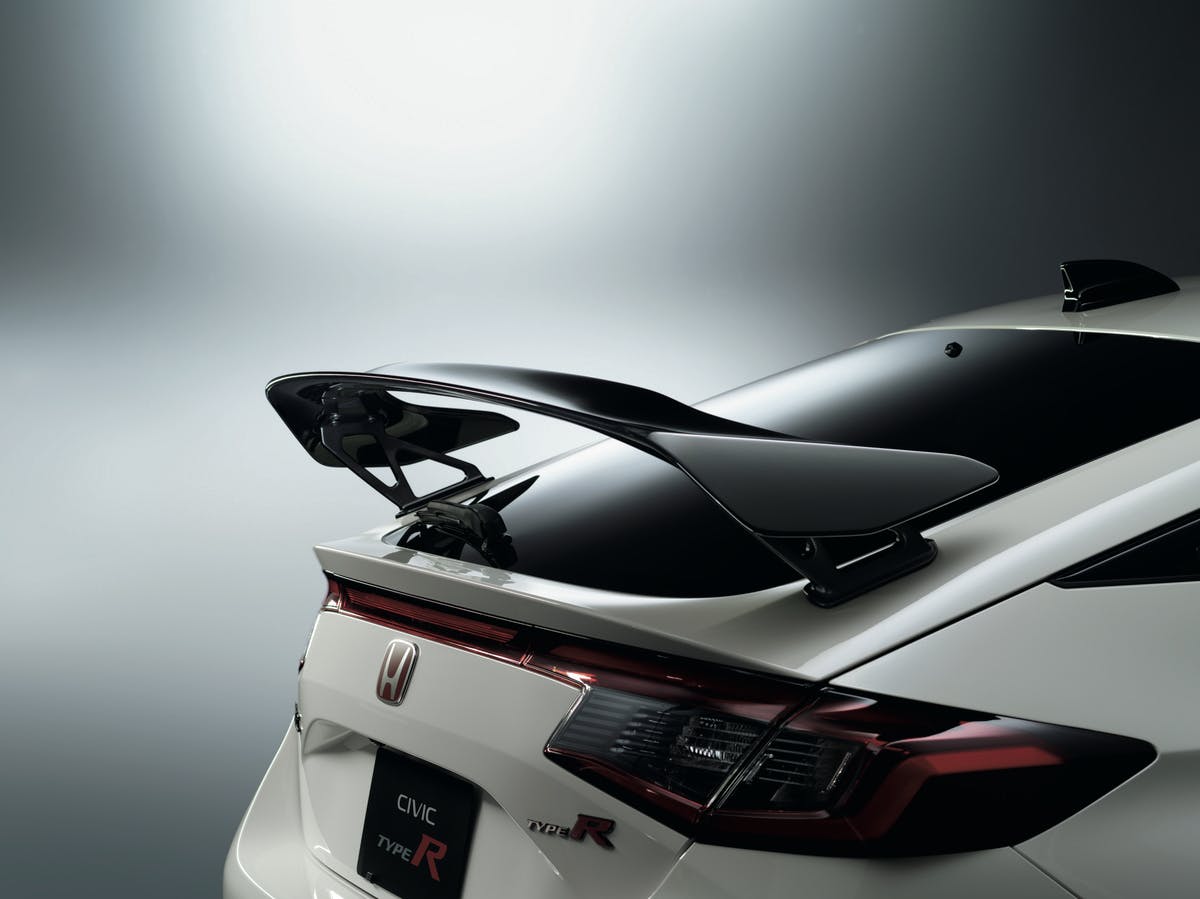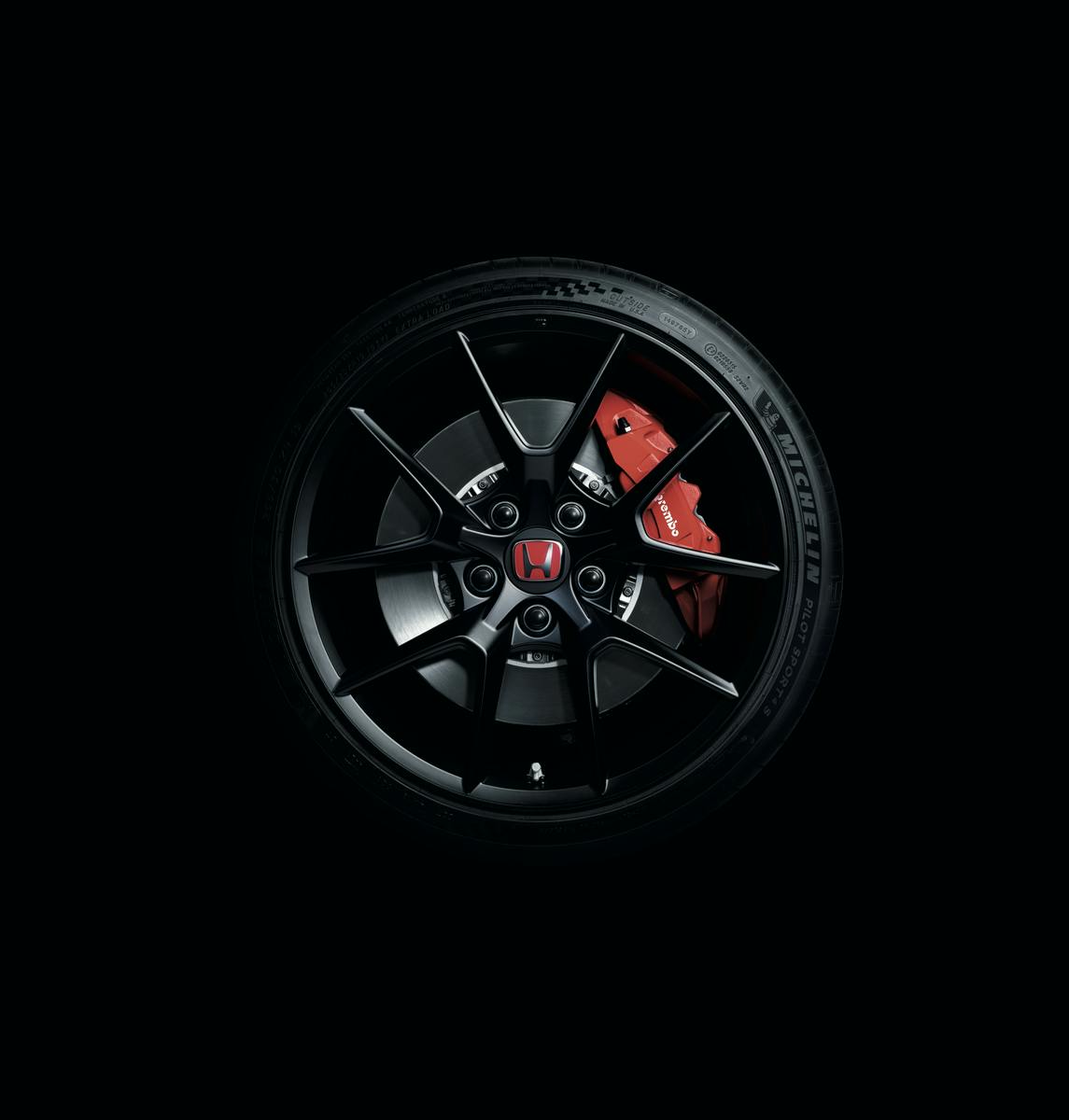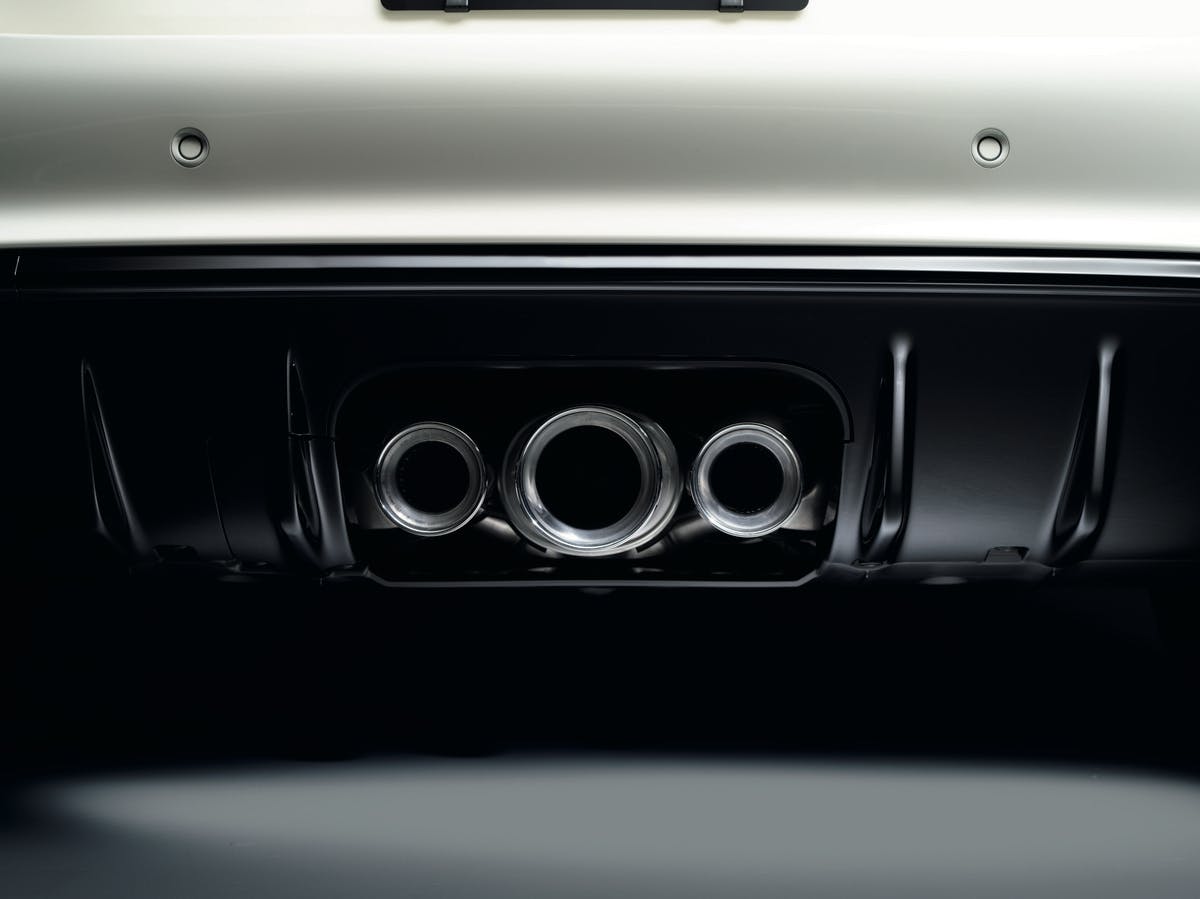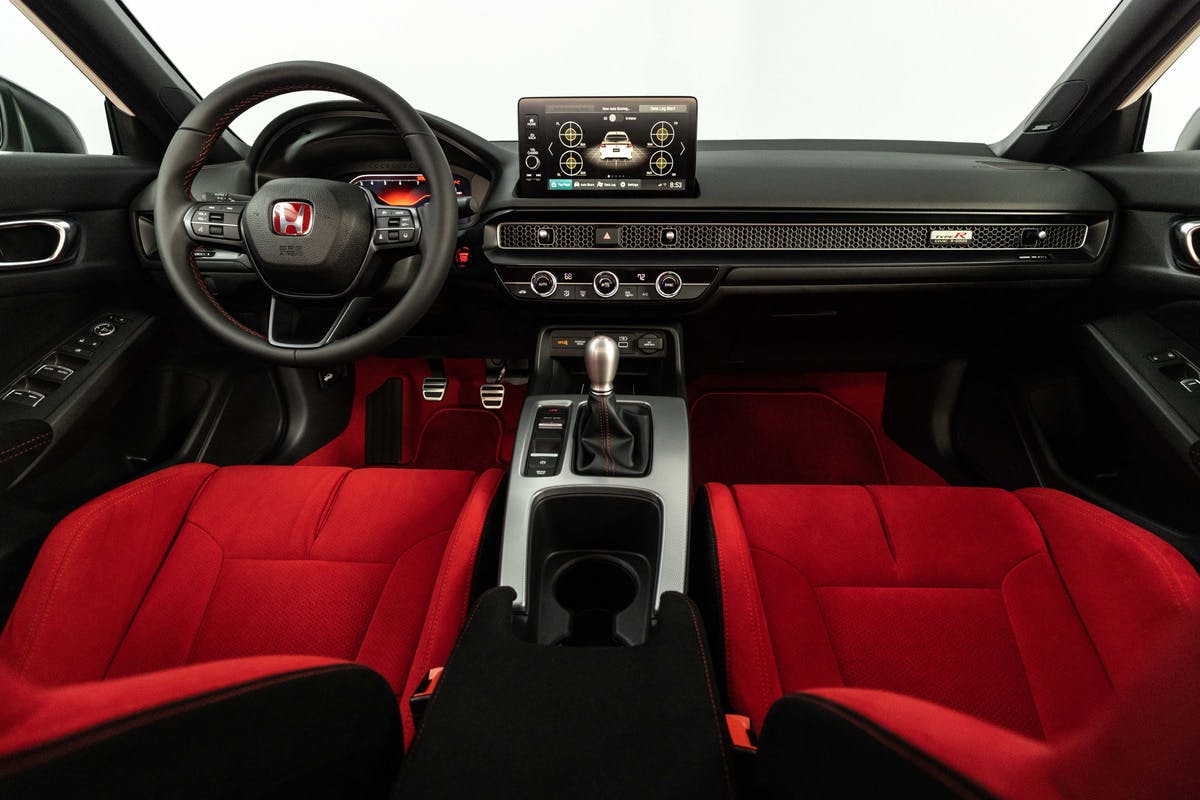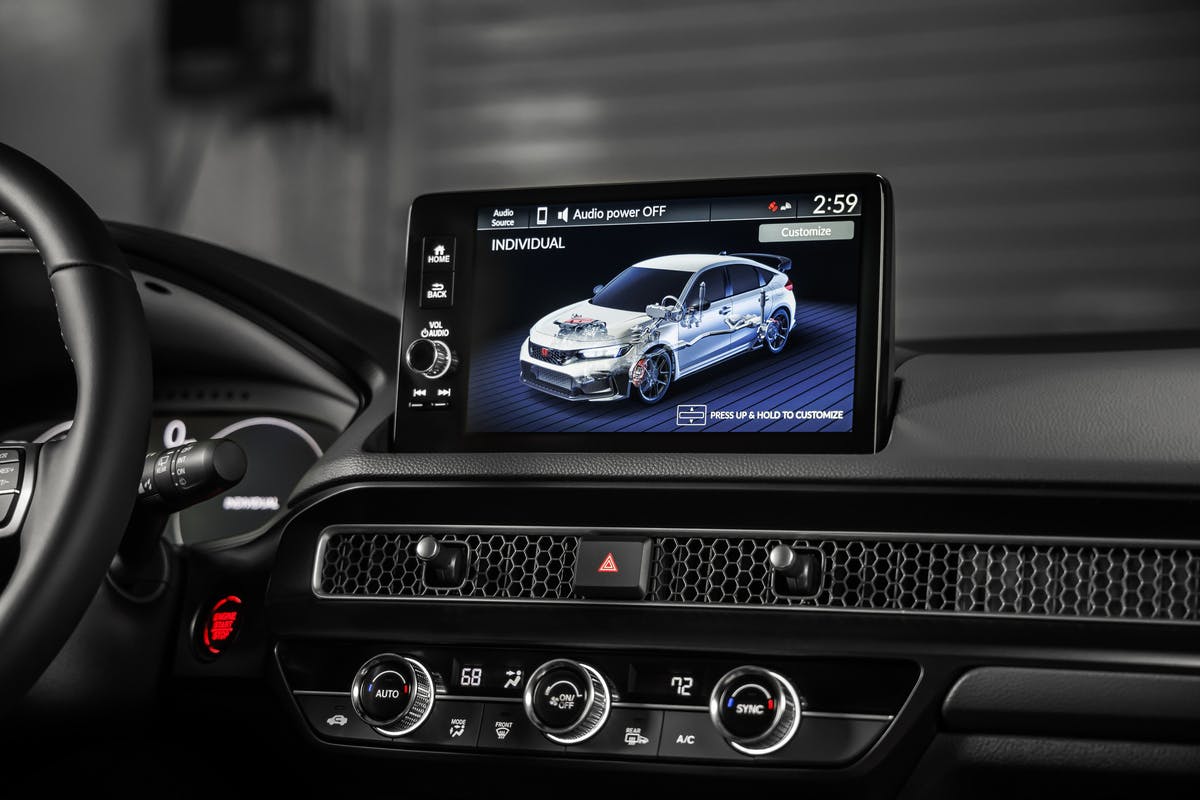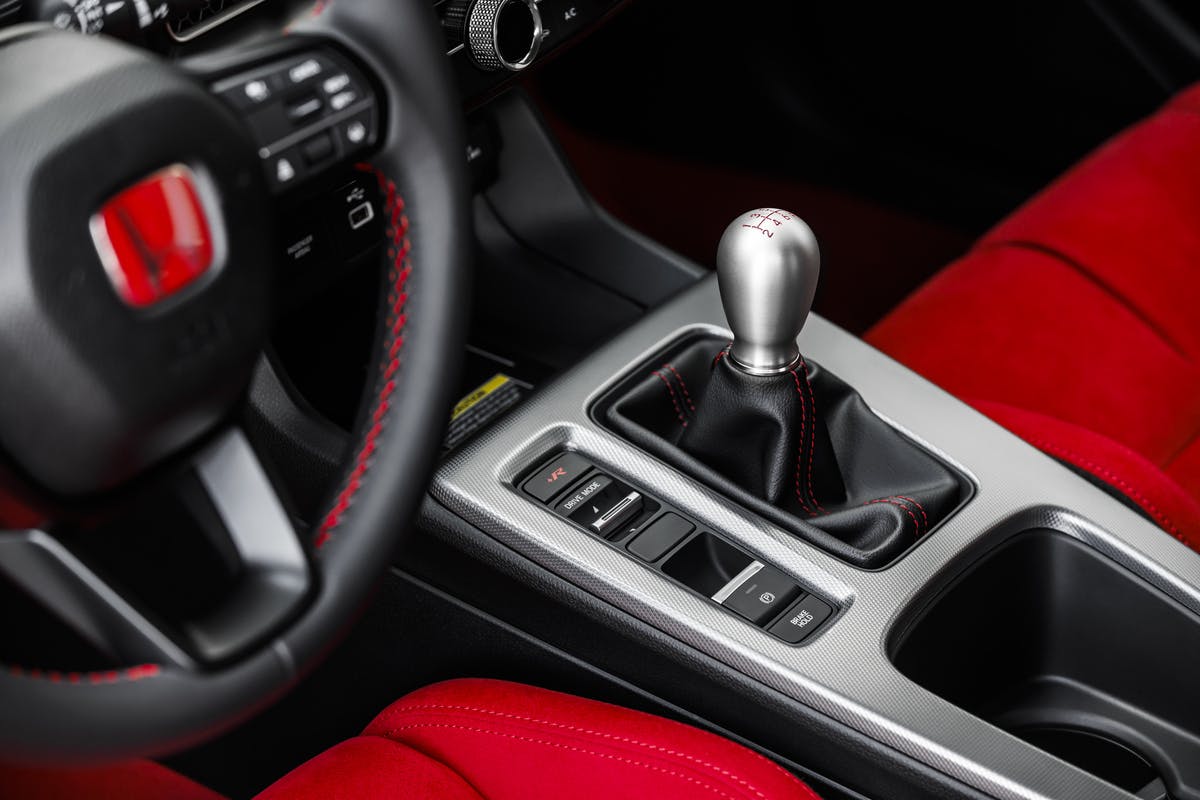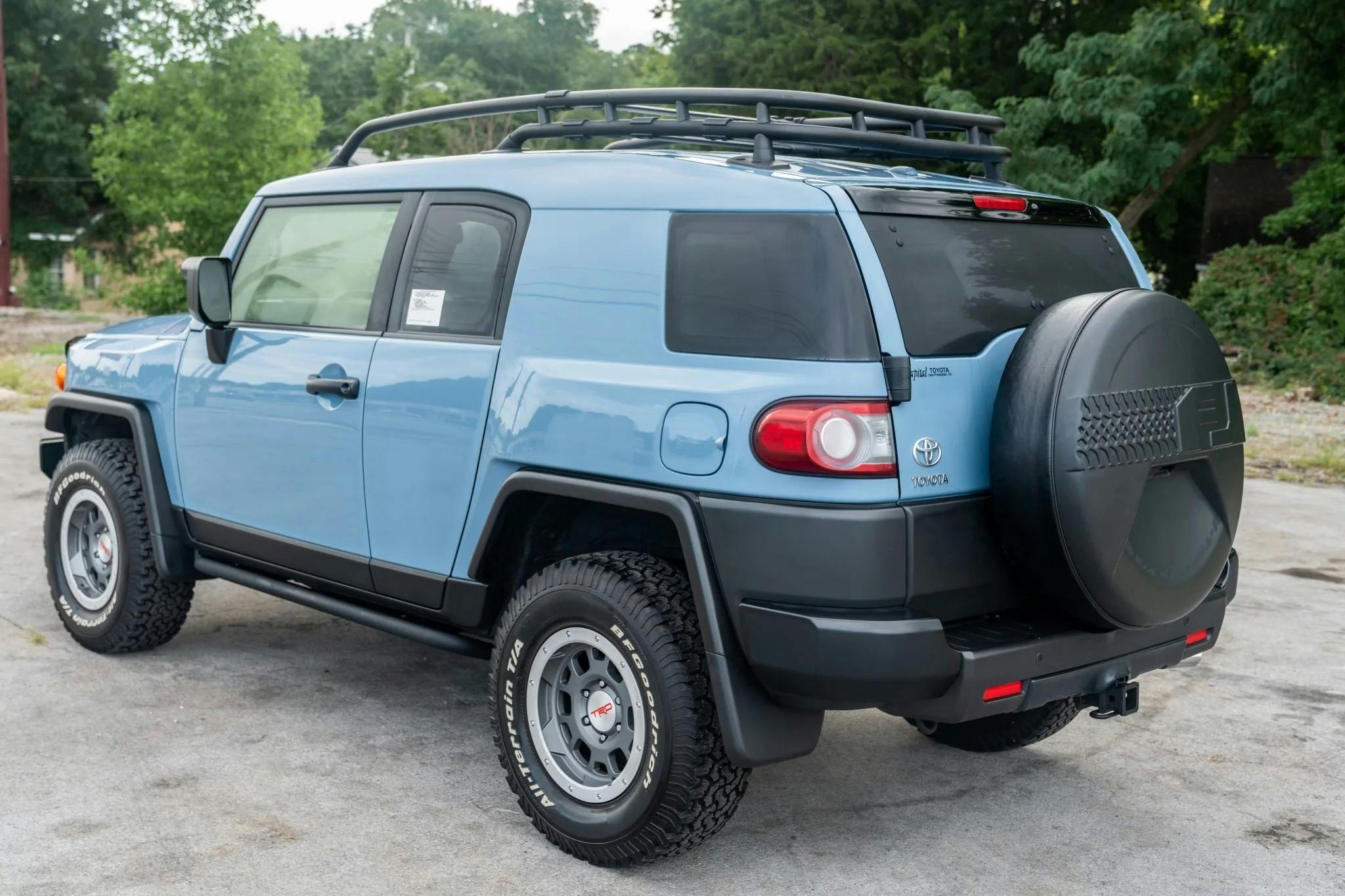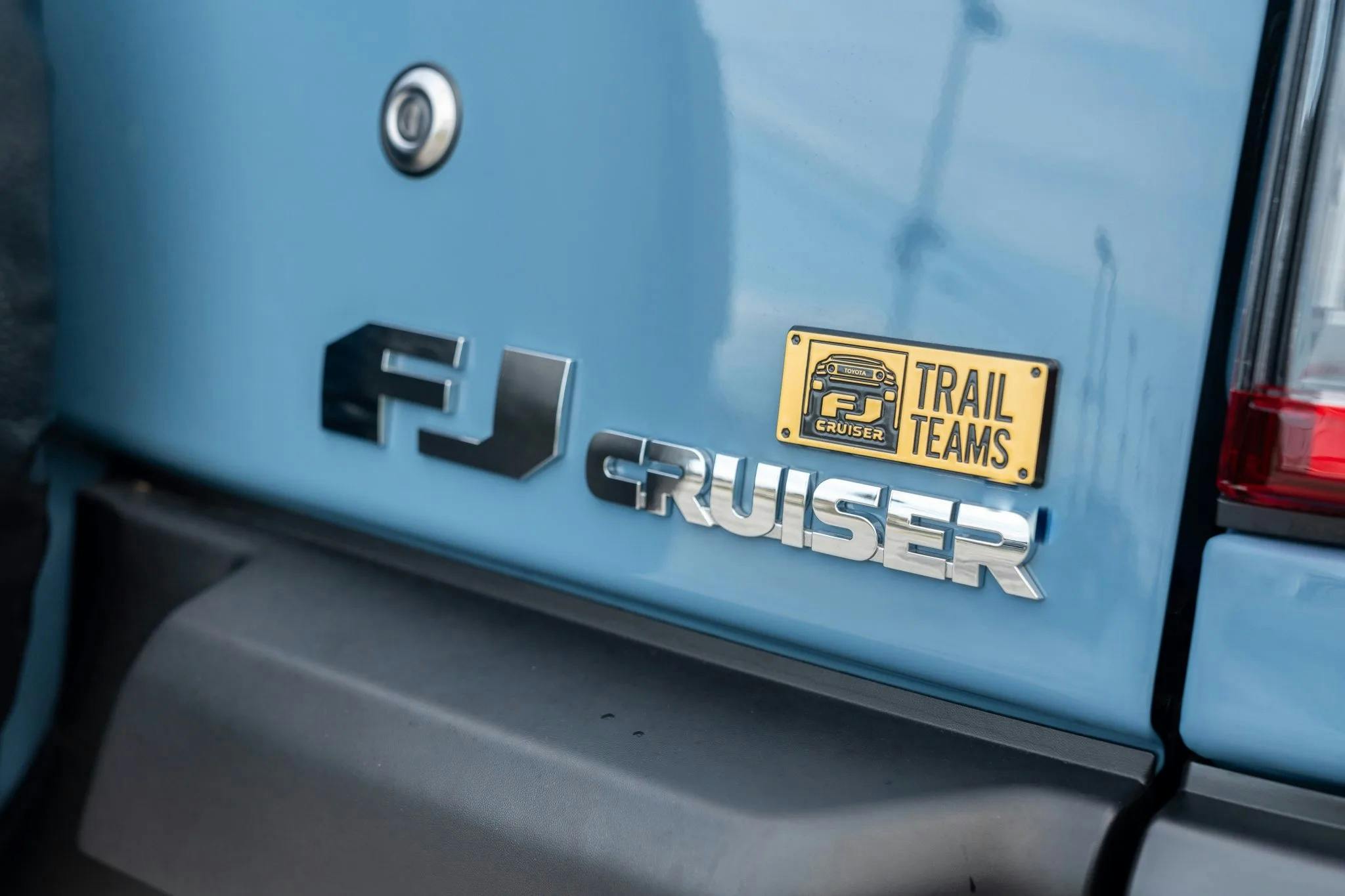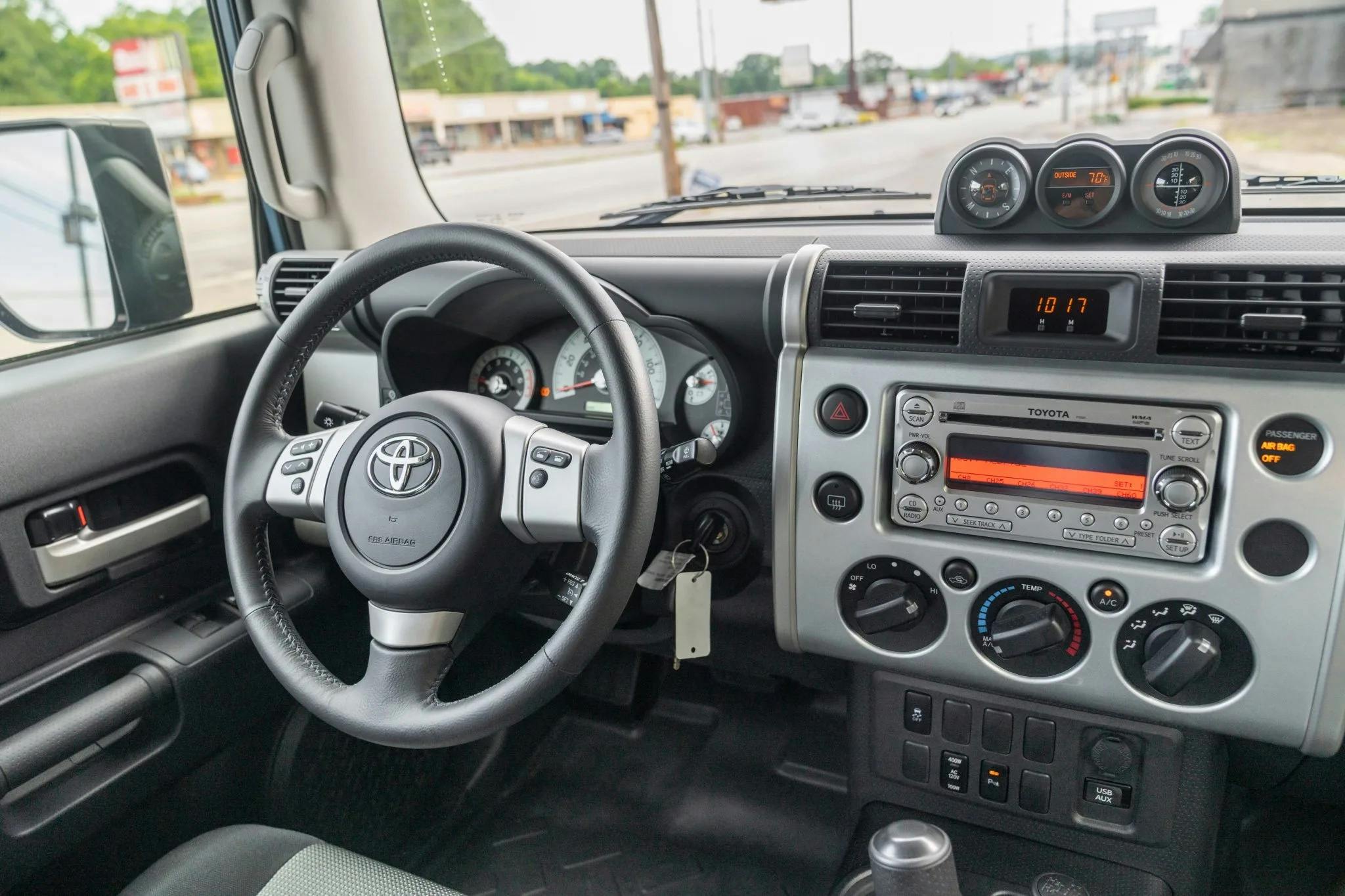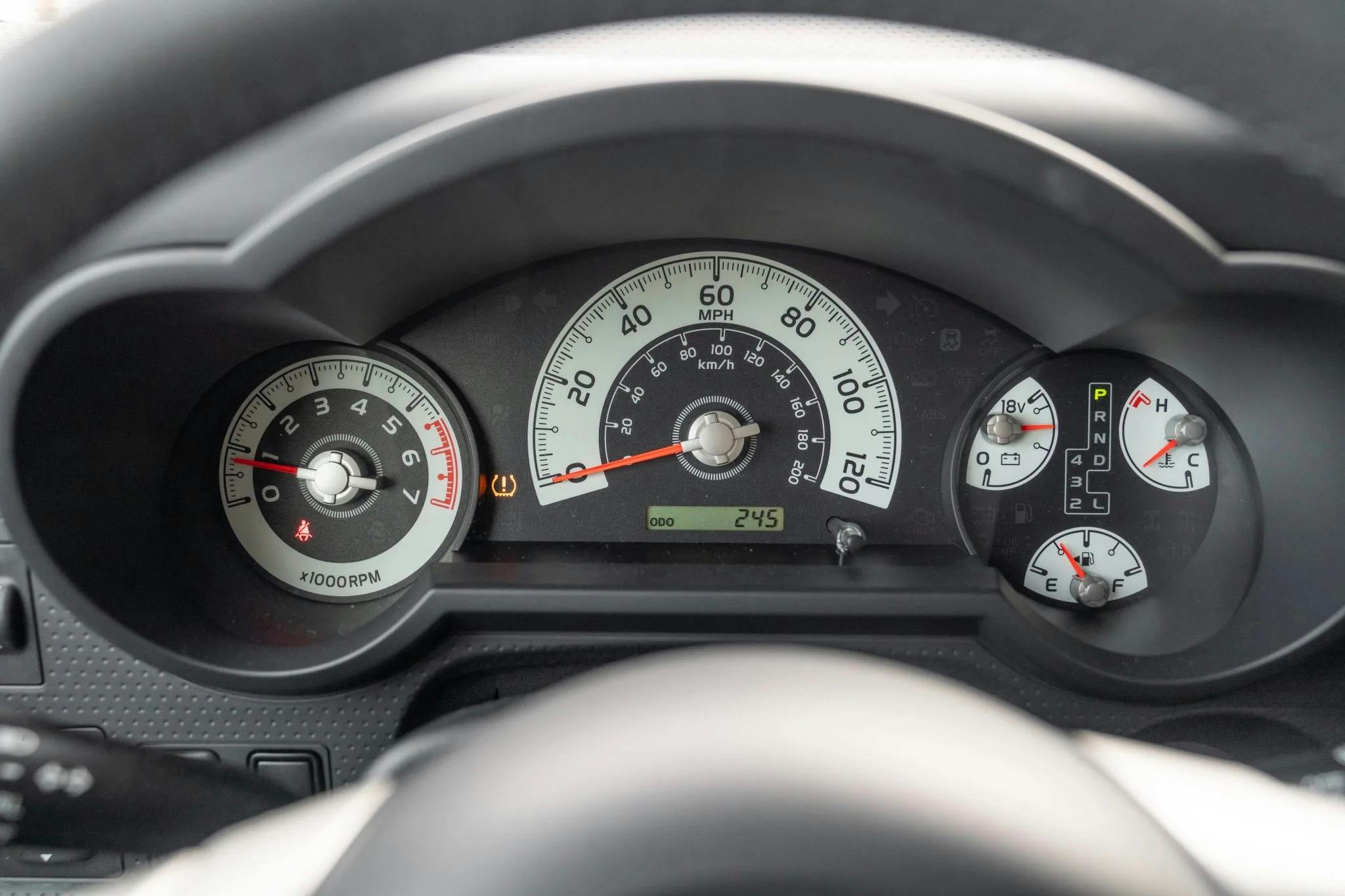Civic Type R power figures leaked, AMG V-8s stick around, a racer with an airplane heart
Civic Type R to pack 326 hp, according to leaked brochure
Intake: Though Honda unveiled the 2023 Civic Type R a few months ago, the automaker did so without specifying power output from 2.0-liter turbocharged four-cylinder. Now, a supposedly leaked Japanese brochure posted to an 11th-generation Civic forum indicates that the new top-dog Civic will boast 326 hp, a gain of 20 ponies over the outgoing version. Torque is also up, from 295 lb-ft up to 310. The brochure reveals that the final drive ratio will drop slightly, from 4.111 to 3.842. Although cars tend to get heavier with each new generation, the new Civic Type R won’t gain much heft; the brochure indicates a curb weight of just 3153 pounds, up a mere 32 pounds over the outgoing CTR. (That said, curb weight can be calculated differently in different countries, so don’t take that 3153 figure as definitive for the U.S.-market car.) UPDATE, 9PM ET: Honda announced this evening that the U.S. Type R will get 315 hp and 310 lb-ft of torque. Whether the Japanese-market car gets 326 hp remains to be seen.
Exhaust: Honda has already announced that the Civic Type R is the fastest front-drive car to lap its Suzuka test track, and that it would soon attack the Nurbürgring Nordschliefe in attempt to knock down that lap record as well, which currently stands at 7:40.1, accomplished by a 2019 Renault Megane RS Trophy-R. Hot hatches may be a dying breed, but we’re thrilled that Honda is giving its wild sport compact another go. The forum post also speculates that early production through April 2023 is likely to be around 6000 units, although there’s a rumor that Honda is considering upping that number to 10,000 units due to high demand, particularly in the Japanese market. The more the merrier, we say, especially if Toyota is going to limit GR Corolla production. — Nathan Petroelje
Six-figure FJ Cruiser highlights fever pitch of Toyota 4×4 market
Intake: A 2014 Toyota FJ Cruiser sold for $108,000 including buyer’s premium on Bring a Trailer yesterday—yes, you read that right—making it the first six-figure FJ Cruiser sale we’ve seen. The Trail Teams treatment was a limited-edition package for the FJ, and this one had just 245 miles on the clock. Toyota produced the Trail Teams FJ from 2008–14, although it didn’t offer one in 2009. The package would debut a unique color each year and feature a color-matched roof instead of the white roof found on more modest trims. When Toyota announced that 2014 would be the final production year for the FJ Cruiser in the U.S. market, it unveiled the Trail Teams Ultimate Edition, which included a few special touches above even the previous model years that got the Trail Teams treatment. The unique color was Heritage Blue, meant to evoke one of the original FJ40 Land Cruiser’s factory paint color. There was also a unique white grille bezel, again a nod to the FJ40. Things got gnarly in the suspension department: previous model year Trail Teams FJs had Bilstein shocks developed by Toyota’s TRD racing department, but the Trail Teams Ultimate Edition got remote reservoir shocks that raised the vehicle a tad higher. A host of interior flourishes like a “One of 2500” plaque made it clear that you’d sprung for peak FJ.
Exhaust: New, these brutes sold for $37,455. Netting nearly three times that as a collector car less than a decade later? Not a bad return on investment! It also marks a milestone moment for the FJ, according to Hagerty Valuation analyst Adam Wilcox. “This sale solidifies the FJ Cruiser as a real-deal collectible,” he says. “They have had a cult following since new, but this result will push the retro 4×4 into the mainstream eye.” Classic Toyota 4x4s have been on a hot streak for several years, and that hype has been transitioning over to newer and newer models—FJ80 Land Cruisers are now selling for Fj60 and FJ40 prices. It’s no surprise to see the FJ Cruiser, which was a bit of an oddball retro play, get swept up in the fray. — NP
The first solar car debuted 67 years ago

Intake: In June, we told you about Lightyear, the Dutch startup that plans to build a solar-powered car called Lightyear 0. As intriguing as the car is, the concept isn’t as cutting edge as you might think. In fact, the world’s first solar-powered automobile debuted 67 years ago. On this date in 1955, General Motors’ William G. Cobb demonstrated his 15-inch “Sunmobile” solar car at the General Motors Powerama auto show in Chicago. Cobb’s little Sunmobile introduced, however briefly, the field of photovoltaics—the process by which the sun’s rays are converted into electricity when exposed to certain surfaces. When sunlight hit 12 photoelectric cells made of selenium (a nonmetal substance with conductive properties) built into the Sunmobile, an electric current was produced that in turn powered a tiny motor. The motor turned the vehicle’s driveshaft, which was connected to its rear axle by a pulley.
Exhaust: It’s kind of mind blowing that the auto industry’s search for a cheaper and cleaner alternative to fossil fuel has been in the works for at least seven decades. While Cobb’s solar car concept wasn’t exactly embraced by the auto industry in 1955, perhaps he planted a seed that will come to fruition as we look to the future of transportation. While solar cars have their limitations, especially when it comes to range, the times they are a changin’, so perhaps Lightyear’s timing will be better than Cobb’s was. — Jeff Peek
Mercedes-AMG V-8s stick around through 2023
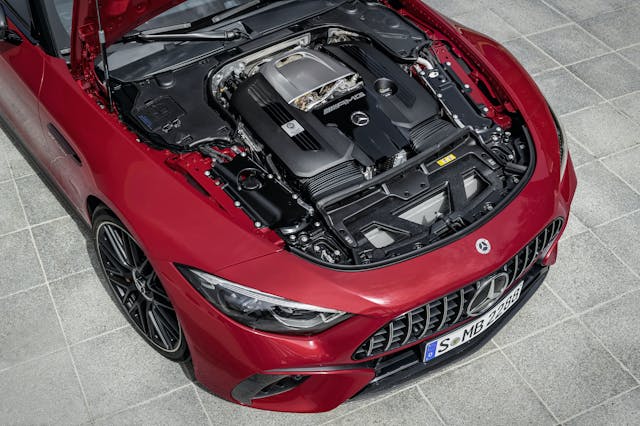
Intake: Scuppered by supply chain issues since the end of 2021, the herculean twin-turbo V-8 found in Mercedes-AMG 63 products will remain available for the 2023 model year. The 603-hp, four-liter bruiser will be available in the G-Class, E-Class sedan and wagon, C-Class coupe and cabriolet, plus the GLS, GLE, AMG GT, and the SL. Only the C-Class sedan is exempt, making use of a two-liter, four-cylinder, 402-hp unit in its flagship C43 model instead.
Exhaust: It’s good news for fans of big block Benzes who get a last chance to pick up a V-8, but it won’t last long. The next AMG 63 will have half the cylinder count, but with an added hybrid kick for an estimated 670 hp. You win some you lose some. — Nik Berg
Bonkers Brit wants to build a Spitfire-powered racer
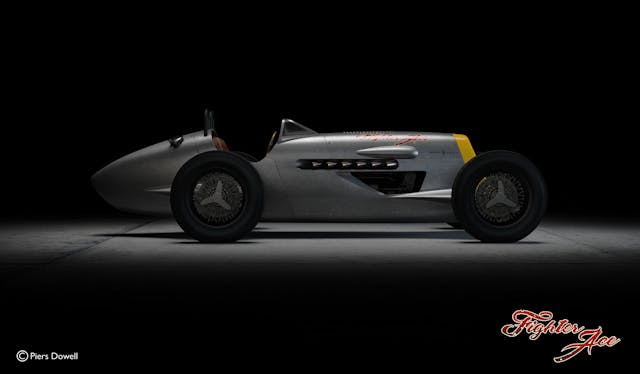
Intake: A British artist is aiming to become the first person to build a race car around the Rolls-Royce Merlin engine from a WWII-era Spitfire fighter plane. Piers Dowell is best known in the U.K. for his stunning motorcycle helmet paint jobs, but has spent six years designing the Fighter Ace. It will be powered by a 27-liter supercharged V-12 engine with up to 2000-hp, which Dowell already owns, installed in a tubular steel chassis with independent suspension and Girling disc brakes. Drive to the 21-inch rear wheels will be via a three-speed manual gearbox with planetary overdrive. A target weight of under 3000 pounds mean the Fighter Ace will certainly fly. Although it would never be road legal, Dowell hopes the car will one day run at events such as the Goodwood Festival of Speed and is currently seeking funding. “Every year I’m at the Goodwood Festival of Speed I keep saying, what this event needs is a car with a Spitfire engine!” he told Goodwood Road & Racing.
Exhaust: We’ve seen the tank-based Rolls-Royce Meteor V-12 fitted to cars before, but Dowell claims that the Fighter Ace will be the only vehicle ever made with a genuine Merlin motor from a Spitfire and he reckons it will be spectacular. “A cross between the Beast of Turin and Ken Block’s Hoonigan,” he says. Now he just needs someone with deep pockets to make it happen. — NB



